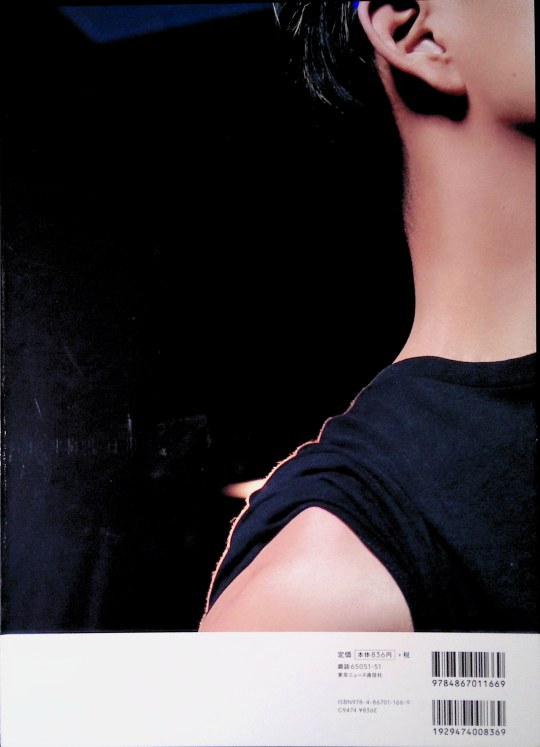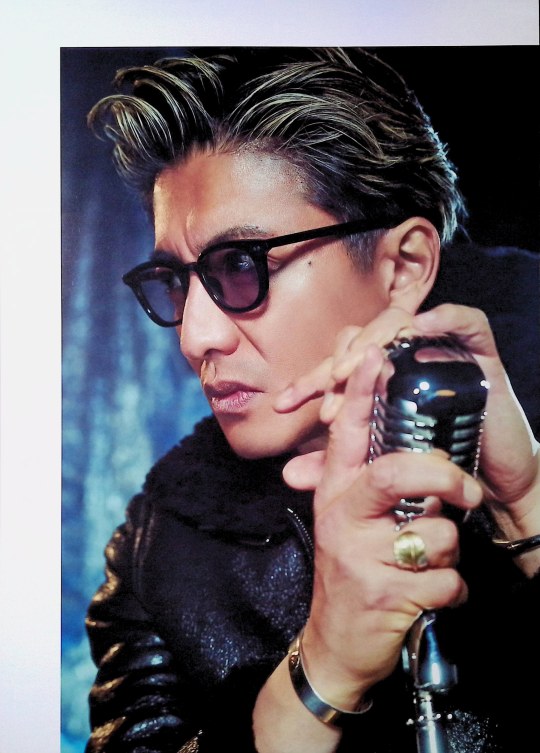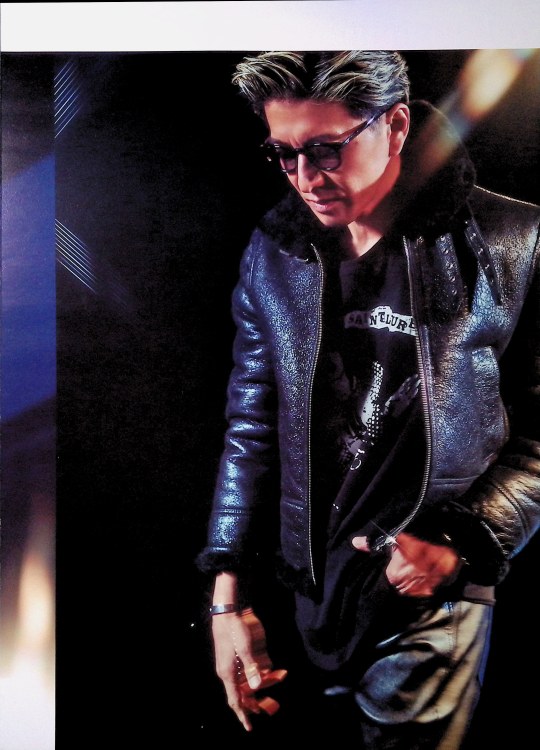#actually couldn’t use the scanner’s bulb at all because it would just create such a terrible one
Explore tagged Tumblr posts
Text












TV がイ / TV Guide Alpha: 2020.11.30 Vol. 37
#kimura takuya#木村拓哉#takuya kimura#scans#magazine#and now for a bit of commentary…#incredibly glossy pages = difficult to maneuver lighting without getting massive glare spots#actually couldn’t use the scanner’s bulb at all because it would just create such a terrible one#so for this first set it was actually more about using my tablet and phone flashlights and angling it /just so/ lmao 😭#(…which is the reason why some pages are so much darker than others)#hopefully the next set i choose isn’t as demanding as this one 🤣
32 notes
·
View notes
Note
“Just call me cake, cause I’m going straight to your ass, cowboy.” with Nat and Steve PLEASE
In the spirit of the upcoming month of Halloween …
Tagging @cptsteven bc i know she’ll like it too
It was the fifth annual Stark-o-Lantern Halloween party, taking place the weekend prior to the actual holiday itself, if only because it fell boringly in the middle of the week. No one had ever truly cared much for the gothic holiday, citing far more important activities to be had, the laziest being “listening to police scanners” ( courtesy of Clint Barton ). It wasn’t until the idea of unity and family came to surface in the team of the righteous did the holiday become something to look forward to.
Leave it to Tony to foot the bill to make it that way.
Property out north of the city had been bought ( much to Pepper’s chagrin ) and the proper people were hired ( also to Pepper’s chagrin ) to make each year more memorable than the last. A corn maze. A haunted mansion. A miniature carnival complete with rickety rides and rigged games. It felt important to provide a place where they could relax and mingle with one another without the “sir” and “ma’am” and weapons.
Mostly.
“I told you you couldn’t bring guns,” Tony admonished, catching sight of the Winghead dressed, unsurprisingly, for the Wild, Wild West. “I also told you that you couldn’t use the same costume as last year. This is just lazy, Steve.”
“It’s not lazy. You really think I had time to go down to Target and get something new?” Sheriff Rogers was holding an unnecessarily spiked hot apple cider and posing casually in fringed chaps, wranglers, a further fringed leather vest, and a crisp white Stetson. Had this not been the third time Tony had seen this outfit, he would’ve pointed out that he could’ve been in a remake of ‘True Grit’ seamlessly. But alas, he was left thinking of ‘Blazing Saddles’.
“Rogers, you’re killing me.” And it was at that point a rare moment of childish humor came into play: Steve pulled the plastic gun from his holster and clicked the trigger. “If I didn’t know it was impossible for you to get drunk, you’d have me thinking otherwise. I have to go make sure Barton isn’t hoarding candy for his kids. Please try to have fun.”
“You make it sound like I don’t know how to have fun-”
“Fun isn’t something you can really fake,” Sam chirped in over Steve’s shoulder, making the soldier jump a bit at the sudden appearance of his friend. “Ahaha, gotcha, huh?”
Sam was dressed … interestingly. Someone had wrapped him entirely in aluminum foil, drawing a very unimpressive circle on his chest. The perking of Steve’s eyebrow must’ve been question enough.
“I’m Aluminum Man. Y’know, like Iron Man but-” Words were cut off at the sheer confusion on Steve’s face. “Nevermind. Hey, you seen Buck around?”
“No, not yet.” He doubted his best friend would show up, not that he was really banking on it. In fact, he was hoping someone else would show up. “Haven’t seen nat either.”
“I’m sure they’ll show- oh mY GOD.” Sam spotted Buck, who had cut his hair short, dyed it blonde and was wearing one of the uniforms Clint had turned down. Sam was immediately howling with laughter, and Steve could not believe the defected assassin was taking a cheap shot at the archer in a parody costume. “YOU DID NOT.”
Buck grinned something snarky, pointedly ignoring the glare from the candied apples stand across the path. Clint was already planning his revenge of the greasy piece of sh-
“I had to. I couldn’t let all the stuff he says about me fly like that.”
“The blonde does not suit your complexion at all, man.”
“Oh good, then I look more like him than I originally thought.”
The trio had a solid snicker, spending time rounding up a variety of sugary goods, spiked hot chocolates ( of which Sam had ordered a “cup of me”, bringing Steve to facepalm ). Despite the time spent with the boys, which was surely a fun time, Steve had kept a keen eye out for a familiar silhouette and shade of crimson. Disappointment was slowly starting to settle into his bones, but more so at himself. He should’ve known better than to think Romanoff would attend one of these parties. Had she even gone to any of the prior ones? Or was her costume just that good? The revelation brought him to scrutinize costumes that hid faces, but he was left with more suspicions than answers.
A hand patting his back brought him thoughts back to the candy corn he’d been taking his time eating.
“Don’t worry, bud. You shouldn’t get down about Nat. She’s never been one to be like … out there, y’know?” Sam had had one too many spiked hot cocoas, but the sentiment remained the same.
“You’re right,” Steve admitted. “It’s not like I had anything planned, anyways.”
This was a lie. He’d wanted to kiss her in the corn maze. Was that too cheesy?
“Yes. That is really too cheesy,” Buck said, eating cotton candy from the end of an arrow. It hadn’t occurred to Steve that he’d been thinking outloud. For a moment, he was thankful for the lack of light in the night air since it meant no one could see just how red his cheeks were in a furious blush.
“Shut up. Let’s hit up the Haunted Mansion.” Sam swooped in, per usual, to save the day. Any kind of wallowing could be fixed in the eyes of Sam Wilson, despite him knowing how much Steve thought haunted mansions were cliche and boring.
When you are in a constant war with every bad guy in the universe, is there such a thing as a jumpscare anymore?
It was a way to pass time, so Steve couldn’t really argue with the boys, who almost always ribbed one another too much to even notice the zombie jumping out of the dark corner in the room or anything. Steve was just thankful that he had a handful of candy corn and two grown children to babysit.
Until they suddenly weren’t even around. When did he get alone in that room? The bland walls flipped to produce mirrors. A whole lot of mirrors, leaving the patriot to stare at several dimensions of himself, bathed in a sickly green light. He couldn’t help but notice that green really wasn’t his color.
Movement in the corner of his eye, and he nearly snapped his neck trying to catch it in time. All he was left with was, well, nothing. It made him think he was just seeing things because of the general ambience. It wouldn’t be the first time. Wanda was banned from using magic within the first ten minutes of her first appearance at one of these Halloween parties. That had been a James Wan movie made real.
Another movement from the corner of his eye, leaving him whirling to try and catch it. Again nothing.
“Ha ha, guys. Very funny, trying to scare an old man. We all know that isn’t happening.” Confidence painted his tone thickly, as if he was absolutely sure this was something Sam, Bucky, and Tony had cooked up in their free time. He wouldn’t have been surprised in the slightest if that were the case.
Two fingers walked two inches up his spine, though he spun again to try and catch who’s fingers it was, only to be met with his own face looking back at him.
“Come on, guys. Using Wanda like this isn’t very nice.”
Two more inches, and he turned. He wasn’t met with his own face, but rather a neon glowing sign shining through the mirror that was creating an illusionary wall. The green light had changed its source from the bulbs overhead to this light alone.
It was a neon pair of green lips. Nothing special, and nothing particularly unnerving about it. An unseen white neon bulb flickered a skull and crossbones behind the lips. Steve rolled his eyes.
“This is just getting annoying,” he grumbled, looking around to try and find a way out. Calloused palms moved along the mirrors, leaving prints in his wake in his search for the exit. But the further he traveled from the neon, the darker the shadows grew.
He was met with another neon sign, though this time, it took on the crude illustration of a witch face. Rather than look as if it were fixed on a wall, it moved slightly. It would be now that Bucky would tell Steve that this was a golden rule in watching horror movies: the closer a character looks at something, the more likely there is to be a jumpscare.
So, naturally, Steve Rogers leaned in to try and see if he could make out what was attached to the neon face.
Instead of getting an answer, he was met with a quiet and remarkably sinister whisper in his ear despite there being nothing in the reflection.
“Just call me cake, cause I’m going straight to your ass, cowboy.”
It was followed swiftly with a loud SMACK! across his ass.
And thus, Steve Rogers nearly jumped out of his skin, crashing into not one, but two mirrors with flailing limbs and scattered candy corn.
With the breath stolen from him and nerves frayed, he laid in a heap of broken mirrors, fluorescent lights flickering to light above, only to be blotted out by that damned witch mask. He felt so cold in that moment, right up until that mask was pulled back, and the face of a very, very sneaky Russian was grinning down at him.
“NAT?!”
“Did I ever mention that I love Halloween?”
“NO?!”
“Shh.”
“NO!”
She helped him pipe down with that kiss he’d been wanting, though he would’ve greatly preferred his original idea of the corn maze to this.
But he couldn’t help but grin about it the next day.
#romanogers#captain america#black widow#mine#answered#babyhenbitch#idk why i always write more around halloween#userlu#kaitsfam#userblackwidow#userlulu
33 notes
·
View notes
Text
I can call myself the Nancy Who Drew because (a) my name is Nancy, (b) I draw, and (c) I solved a mystery. Not exactly like my childhood heroine Nancy Drew, but in my own way, through drawing (and painting), and writing about it. The two-volume memoir called The Nancy Who Drew has taken up the last twenty years, but never mind. It’s been worth the effort to paint a picture in the reader’s mind, which opened my own mind to the story my pictures had been telling me all along.
The ones from my imagination anyway. When you have a brush in your hand, you never know what the subconscious will release. But I trusted it because painting, that silent, wordless activity, was my voice when I had no other.
I began with oils, and at first only switched to watercolor when I couldn’t afford a new roll of canvas. Later, I turned to watercolor when the umpteen canvases stacked against the walls began taking up all the floor space. But then something else happened, which I can only describe as a feeling of becoming lighter, and wanting a lighter, less dense medium.
My easel now serves as a clothes rack, and instead of a canvas six feet tall, I’m happy with a six-by-six-inch watercolor sketchbook. When I post an image online no one can tell the difference.
I have three watercolor stories to share with you. One took place at the Art Students League during my first stab at the medium. As I watched the instructor do a demonstration, making it look effortless, I thought he was a magician. I was in despair when he came round to look at my work that day. But he said to me, “Have you done a mile of watercolors yet?”
A mile? I had a flash of watercolor paper stretching into space, on and on for an unimaginable distance. “No,” I said.
He smiled. “Well, wait till you’ve done a mile.”
If that story was about the value of experience, this next one is about power. Power and control. Other than when I was a child and drawing and painting were simply pleasurable activities to engage in, making art has had a lot to do with having some kind of control over my life. In the sense of being in charge of my own interpretation, asserting my own expression. Then, reproducing what was outside of me became a way of taking it in, feeling its energy, connecting me to whatever I happened to be painting.
For those of us who quail at the fleeting nature of time, who miss loved ones before they’ve even left, who find the beauty and pain of existence more easily borne through color and form—because that’s one thing you might have control over—there’s nothing quite like picture-making.
My mile of watercolors picked up speed when I read Burt Silverman’s Breaking the Rules of Watercolor, and realized there was a way to manipulate the medium that put me more in charge, less fearful of making a mistake. With oil, if I didn’t like what I had done, I could come back the next day and paint over it. Or whitewash the whole canvas and start again. Now I learned that I didn’t even have to use watercolor paper! I could use Bristol plate, as long as it was heavy enough, and taped down securely to a board. It buckled, of course, and there were waiting times for it to dry and smooth itself out again, but I used that time for starting another.
I had to buy it by the sheet to get the thick, heavy weight, but I cut it into halves or quarters. The beauty of Silverman’s method was the ability to put color in and take it out again. Take it out with a sponge or a brush, and put it back in to create layers. Or to find that white space you purposely neglected to save because you were encouraged to be reckless and impulsive. I’ve included two examples of this method, the self-portrait and the one of Pegasus, which looks more like a gouache than a watercolor, but it’s not.
The book is out of print, but Amazon has it through third-party sellers. When I went to check its availability and read some of the comments, one man complained there wasn’t enough actual instruction or how-to’s, which came as a surprise to me because wasn’t that the whole point of breaking the rules? To find whatever way works for you and to heck with the rules.
I was off and away then, on paper meant for anything but water. Later, I found certain kinds of paper that could absorb water, yet allow you to lift the color out again. It was all about finding what would give me the result I wanted, whether or not I knew in advance what that would be. It was a dialogue between brush and paper, water and colors, and all I did was watch it unfold.
I began with tubes of Winsor & Newton and have tended to stay with them simply because I knew what I was getting. But if I neglected them too long, the lids sealed themselves shut, and lighting a match under them was the only way to pry them open.
All manner of brushes do the trick for me, because it’s never the brush; it’s the hand that holds it. This is the third story, noticing the importance of touch. At the League, I watched how my drawing instructor used her fountain pen like a divination tool.
How she let it hover a millimeter above the paper before making a mark. Her concentration was fierce, as if her hand was being guided by an unseen force. Or maybe she was just allowing the drawing to direct her next move. She was bent over as if in prayer, oblivious to us, her students, gathered round, watching the dance of her nib with the paper.
You couldn’t help but feel it was more than a drawing class; it was a lesson in Oneness. A lesson in reverence for the medium, letting it do its thing and getting yourself out of the way. I thought about her years later when I had a heavy-handed, beginner student of my own. We were doing a watercolor of tulips. When I saw her charging into the paper like the 1812 Overture, I tried to explain the importance of touch. Strokes can be heavy or light; it’s the sensitivity that counts, much like a violinist applying bow to strings.
My watercolors have become rather miniscule of late, and I doubt that mile will ever be reached. But there was a time when I did watercolors 30×40 or 34×40. The paper was cut from a roll, stretched like a canvas and stapled to wooden stretchers. Thirty years later, they’re still on those stretchers and in pristine condition even without glass and a frame.
Yet how I wrestled to get them on the stretchers. The paper had to be totally immersed in the bath to make it pliable, then taken out to be fastened with staples while it was dripping wet. I was drenched and the floor needed mopping, but the paper dried tight as a drum, and no worrisome buckling to contend with.
Three of the disjointed architectural scenes were painted on stretchers. They were a response to all the ‘normal’ architectural renderings I did throughout most of the 1980s. Before you marvel at my drafting abilities, I confess I took slides as well as prints, and projected the slides onto my paper so I could copy the lines. It was still a lot of work, but I don’t think I would have even attempted it if not for this drafting shortcut.
My rendering business came about through a friend in real estate. One thing led to another, and after a few years I was able to earn my living through commissioned work. (Rents in New York were cheaper in the 1980s—and so were art supplies.) But as others have found, turning your passion into a job has a downside if you end up painting only for other people. I kept my soul intact with work from my imagination, like the bird lady and the figure dancing with the moon. But it was through renderings that I developed the habit of detail.
I prefer working in daylight, but having deadlines caused me to find that special ‘blue-light’ bulb which gave the effect of daylight no matter what time it was. With the onset of scanners at the end of the 80s, commissions became scarce, and with digital photography they dried up completely. Yet my love for painting buildings lived on when I moved to Brooklyn. Thanks to the protection of the Landmarks Preservation Commission of NYC, I live in an area of beautiful historic homes from a bygone age that call out for my pen or pencil or brush.
I take pictures when I’m outside, then do the work indoors. At least in New York City, because the first time I tried sketching on the sidewalk was a spectacular disaster. A story best saved for the memoir as I’m running out of space here. Meanwhile, this January it’s even been too cold for taking pictures, so I’m doing watercolors of food. In the next few months, I’ll have to curtail those as well in order to get Volume Two of The Nancy Who Drew out there. This is the one that tells the whys and wherefores of becoming an artist and how I kept going.
It often comes down to just keeping on, doing the next picture. And the next. That 95% perspiration thing that involves guts more than talent. Or maybe having guts is a talent too. I once found solace in a book called On Not Being Able to Paint, because lying fallow has a purpose too. Robert Henri’s The Art Spirit inspires me.
“What a writer or painter undertakes in each work of art is an experiment whose hoped for outcome is an expanded knowing. Each gesture, each failed or less-than failed attempt to create an experience by language or color and paper, is imagination reaching outward to sieve the world.” ~ Robert Henri
But then social media inspires me too, because having a place to share our work, knowing people will see it, is a great impetus. Thanks Charlie O’Shields, and thanks Doodlewash!
Nancy Wait Website Facebook Fine Art America Instagram Doodlewash
#WorldWatercolorGroup - GUEST ARTIST: "The Nancy Who Drew" by Nancy Wait - #doodlewash I can call myself the Nancy Who Drew because (a) my name is Nancy, (b) I draw, and (c) I solved a mystery.
#WorldWatercolorGroup#artist#Brooklyn#doodlewash#featured#inspiration#memoir#painting#watercolor#watercolor painting#watercolour#writer#writers
2 notes
·
View notes